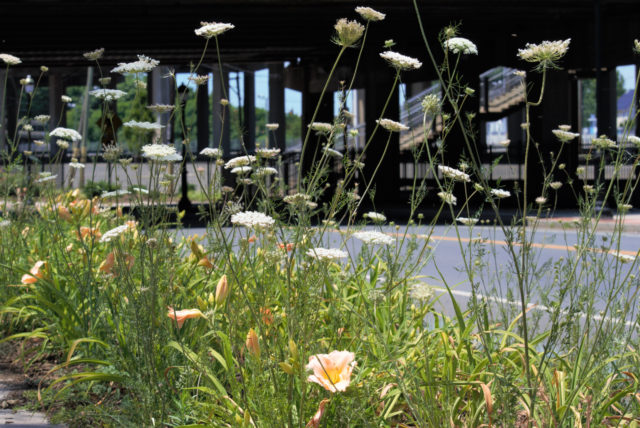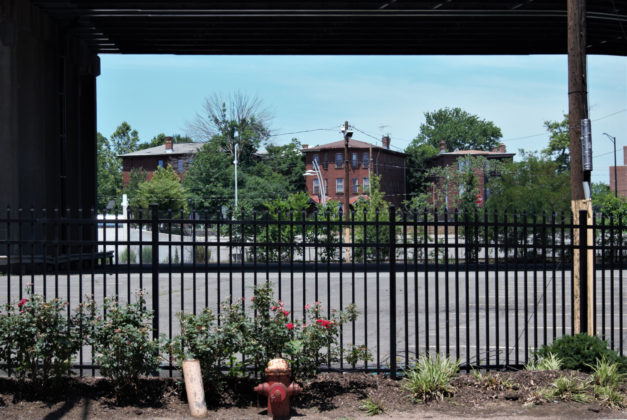There is always a danger in putting people and things up on pedestals.
The automobile — via the highway — was lifted up above all else. For those on foot or bike, the physical rift is undeniable.
It’s an everyday reality.
It’s why we grumbled so much when the State of Connecticut decided to barricade Flower Street, one of only two north-south roads between Asylum Hill and Frog Hollow that was safe enough to bike on. Now, we have to risk it on Broad Street or Sigourney Street, bike on the sidewalk as if we haven’t gotten our training wheels off yet, or go to Laurel Street, which might be in the opposite direction from where we are going. These detours are nothing in an automobile, but we are not talking about those whose entire lives have been elevated.
Have you walked across the Sigourney Street bridge in the blazing heat of summer? I have.
There are no trees. There is no shade. But wait, there’s more! It’s also where people are driving on and off I-84, which means crashes galore. The sidewalk is nearly always coated in tiny pieces of asphalt that fly off the roadway, along with car bumpers, headlights, and broken glass. Nobody cleans up after themselves when they rear-end someone turning off the ramp, and why would they? Our City, our State showed us no respect when they interrupted the neighborhoods by installing this device. They continue to disrespect us by closing one of the few streets that got us to the other side of this monstrosity.

Somebody commented that statues are easier to take down than the Aetna viaduct would be. I think this misses the point.
Removing a statue is a symbolic gesture, and in itself, that does not eradicate racism. It’s a fairly simple act that serves as a step toward dismantling White supremacy.
Toppling the highway, likewise, is merely one step. It would remove a constant visual and physical barrier, but there is still the question of what comes after. Would we see investment in our neighborhoods? Would we then build the world we want to see? Or do we stop after taking away something we oppose?
You have to be for something.
When your mindset shifts to possibility, you are not going to be easily discouraged by how complex an obstacle might seem.
We could have more green space, with loads of trees, to offset some of the damage I-84 has done to our health and environment. We could have narrower city streets, making it more likely that all road users can get to our destinations alive. We could have sturdy, mixed-income housing and incentivize public servants and school teachers to live there.
Neither I-84 nor I-91 existed 100 years ago, if you can believe it. We had another reality. We can change again.
Top photo: View of Asylum Hill from Frog Hollow, with the Aetna viaduct and a sprawling surface parking lot dividing the two.
Bottom photo: Capitol Avenue, with stairs to the Sigourney Street bridge

D Fleischer
I continue to admire and depend on how well you write and what you write about, connecting so many dots . . . and particularly when you write of this dearly beloved city and what has been lost. When I read your last words here, “We can change again”, it is not hope I feel rather, remembrance of reality, that is, reality beneath asphalt highways, ownership, sight unseen beyond illusion. Thank You.